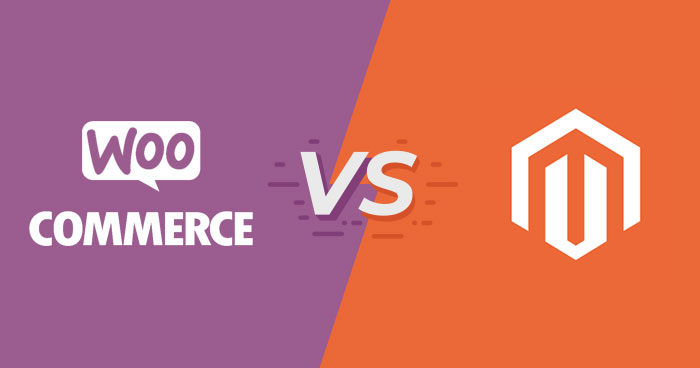This post will make a head-to-head comparison of Magento vs. WooCommerce. Among other things, we shall highlight the two platforms’ main functions, hosting capabilities, price, and ease of use.
What is WooCommerce?
Rather than an independent e-commerce platform, WooCommerce is a WordPress plugin. As you know, WordPress’s primary function is to create web content.
Judging by its name, Magento vs. WooCommerce relies on the parent platform’s broad web content management capabilities to “woo” potential web shoppers.
What is Magento?
Magento is an open platform with long traditions in eCommerce. Some of the biggest and most popular online stores use Magento hosting.
It offers a specially-tailored feature set, including a theme-based interface and a wide variety of useful add-ons. However, one needs basic web-development knowledge to fully benefit from Magento’s cart of functions and features.
Web Hosting
As a WordPress plugin, WooCommerce relies on a WordPress site’s hosting to operate. By contrast, you’ll have to find a host only for the free Community Version for Magento.
The two paid versions of Magento come with attractive hosting packages. Unfortunately, their prices are not listed on the platform’s website. To access them, one has to book a chat session with a sales representative of the company.
Product Management
WooCommerce has all product management functions and features that a small or medium-sized web store is likely to need.
We liked how easy it is to add new items to the shop’s product line with WooCommerce. Even so, WooCommerce’s product management functionalities remain pretty basic without purchasing essential add-ons and extensions.
Fortunately, Woo’s Product Add-Ons Package costs only $49 a year and offers shoppers multiple personalization options.
Along with product personalization, Magento provides many advanced product management functionalities, such as product reviews, item grouping, wish lists, and tailored pricing options. The drawback is that you’ve got to go through a whole bunch of documents to master them all.
Which is Better for Beginners?
If you are making your first steps in eCommerce, we’d recommend WooCommerce. In the beginning, you are unlikely to need Magento’s complex product management features. At the same time, your store will begin selling items quickly and easily.
As your eCommerce experience grows, you can migrate to Magento’s designated platform and take advantage of its sophisticated functions.
Security Features
Speaking of e-commerce businesses, the importance of hosting security is growing every year. When visiting a web shop, customers presume that their personal and banking information shall remain strictly confidential.
Easy to set up as WooCommerce is, its web security options are rather basic. You can improve them with paid security add-ons such as Wordfence, Sucuri Security, or iThemes Security.
Magento offers a broader portfolio of security options in the form of security patches and platform updates. Its powerful Security Scan Tool is the latest addition to this assortment.
Unfortunately, one will need advanced web development skills to understand and apply most of the platform’s security tweaks. If you want to keep your Magento store fully protected, you may need to hire a security admin.
Small online stores will probably be well-protected by WooCommerce’s basic security features. If you opt for Magento’s advanced security options, make sure to keep them up to date at all times.
How Much Do They Cost?
Before deciding the winner in this head-to-head review of WooCommerce and Magento, we need to scrutinize their pricing plans.
As mentioned above, WooCommerce is a free WordPress add-on, whereas Magento only offers a free Community Version. Magento’s premium pricing plans do not show on the company’s website, which isn’t something we liked.
The important thing is that both Magento vs. WooCommerce solutions allow the user to set up an online shop without initial costs. The only thing you’ve got to pay for is the hosting, but that’s the topic of another post.
Extensions Are Costly
Even if WooCommerce and Magento offer free functions and features, their essential add-ons and extensions are pretty pricey. In the beginning, you may use some of the free extensions, but the premium add-ons make a big difference.
To make a wise choice, you should first figure out which extra functions you’ll need to add to your online store. After making your list, email it to Magento’s and WooCommerce’s sales teams.
This personal approach works in two ways. First, their sales reps will try to make you the best possible offer. Second, if you start comparing the two platforms’ add-on lists, you may miss some crucial details.
That being said, WooCommerce remains the cheaper e-commerce solution.
Final Verdict
While Magento and WooCommerce are great e-commerce solutions, the latter remains just a WordPress plugin.
Magento is the preferred choice of medium and large online businesses because of its comprehensive scalability options.
